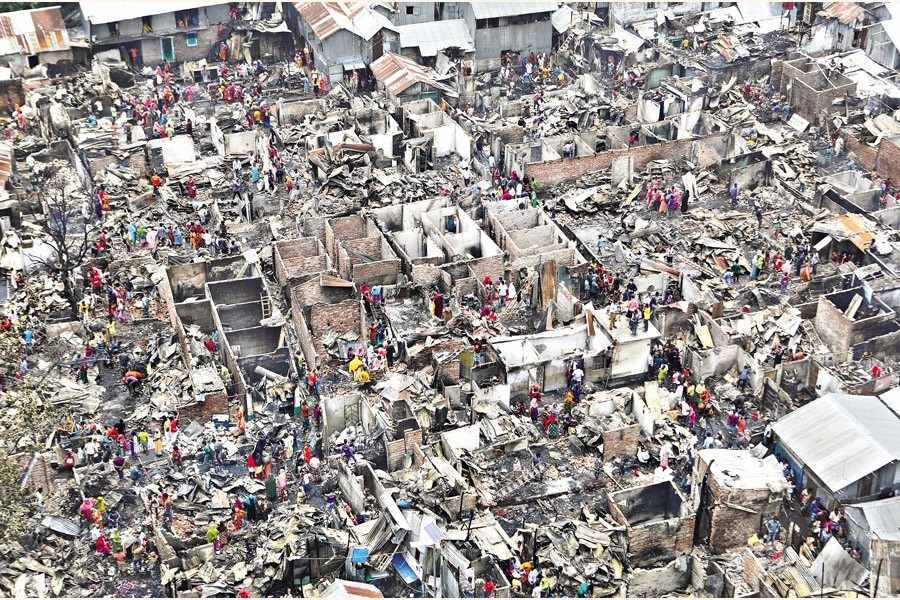Once again, a devastating fire has gutted about 500 shanties in Mohakhali's sprawling Sattola Bosti (slum). It suffered a similar fate on November 23 last year. Actually, the slum has a long history of experiencing devastation from fires. In recent years the first such fire was recorded in October 2012, then another fire raged in May 2015 and again it suffered devastation from a fire in December 2016. Mercifully, no life was lost in any of the fires except injuries to a few people in earlier fires. If the incidents of fire at this slum do not fully present the woes and miseries of slum people, the high incidence of slum fires definitely exposes the reverses suffered by these marginalised community. As many as 174 fire incidents at slums in Dhaka, Chattogram and Rangpur were recorded in the year 2020 alone by the Fire Service.
Originated at the wee hour (at around 4.0 am) on Monday, the latest fire gave little scope for saving the slum dwellers' material possessions other than their own dear lives. Poor and marginalised, these people accept hard labour and congested living in order to improve their and their children's future. But time and again, their hopes are dashed and dreams perish in smouldering fires. Accusing fingers are pointed at the slum-dwellers for inviting fire tragedies. This time also, the immediate -- if not the final -- conclusion is that the fire could originate from illegal gas or power connections. There is a complaint that more than 300 illegal gas connections are there in the slum. Are the inhabitants only to blame? Without active role of a nexus of agents, rent-seekers and the power and gas companies, such utility services are unlikely to be available there. The poor inhabitants there only pay rent for the shanties they live in.
The problem lies with the arrangement of slums. Slums are usually built on government lands but some influential people with help from underworld gangs are behind the setting up of slums. Apart from collection of rent, slums are used for drug trade and other anti-social activities. Even the innocent people who earn their bread by the sweat of their brow are often dragged into the underworld crimes. Sometimes they become casualties of infighting among the criminal gang members. There were deliberate cases of slum arsons as happened at Agargaon slum. A number of slum-dwellers were burnt to death in that fire caused deliberately.
All this points to the fact that slums cannot run like this. In an ideal condition, there should not be any slum at all. The rights of the people living there have been grossly compromised. But as members of society of a nation that is poised to become a middle-income country, they deserve better. Yet it must be admitted that slums cannot be changed into moderate shelters overnight. The low-cost housing projects for the poor and slum-dwellers have already become a reality, albeit on a limited scale. Until more such shelters are built, slums should be brought under formal management. Shanties should be rearranged with enough provision for potable water supply, legal gas and power connections ensuring all possible safety measures. The informal sector is overly dependent on the labour of slum dwellers and their health, hygiene, safety and ease of living have to be guaranteed by all means.


